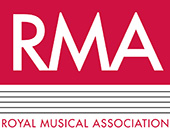The Music and Visual Culture in Renaissance Italy Conference was held at the University of Sheffield from Thursday 13th June to Saturday 15th June 2019. The event brought together an international assemblage of historical musicologists, musicians, historians, art historians, and acousticians specialising in the relationship between the visual and the musical from the late 14th to the early 17th century in Italy. The conference was organised by Tim Shephard (University of Sheffield) and coincided with the celebration of the publication of the book Music in the Art of Renaissance Italy, c.1420–1540 (Harvey Miller Publishers 2019) that resulted from a three-year collaborative project funded by the Leverhulme Trust and hosted by the University of Sheffield.
The three-day programme explored the intersections and interactions between the sister arts, with notable presentations centred around the binary themes of sensoriality and materiality; temporality and affect; and identity and technique. While initial panel groupings highlighted the various roles and spaces of music, the presentations revealed shared vocabulary, sources, and imagery that transcended function and environment. Analyses of writings by Alberti, Aretino, Comanini, da Vinci, Gaffurio, Tinctoris, and Zarlino unveiled interpretational nuances that prompted deliberation amongst the participants. Keynotes by François Quiviger (Warburg Institute) and Flora Dennis (University of Sussex) bookended the three-day conversation on early modern music and image culture.
Discourse on the paragone and the shared vocabulary of the comparative arts were led by David E. Cohen (Max Planck Institute for Empirical Aesthetics), Matthew Landrus (University of Oxford), Karolina Zgraja (Universität Zurich), and Antonio Cascelli (Maynooth University). Cohen’s examination on the concept of harmony and harmonic proportionality traces the development of the term harmonia from classical Greek literature to the writings of Ramos de Pareja, Burzio, Gaffurio, and da Vinci. Comments on the simultaneity of harmony and the simultaneity of viewing led to the consideration of temporality, a theme central to Sophia D’Addio’s (Columbia University) investigation of northern Italian organ shutters. As objects in motion, the shutters provided a visual accompaniment to the organ’s musical practice, thus generating a dialogue between the interior and exterior spaces through the process of opening and closing. The shutters’ painted programme further support notions of passage: from separateness to revelation and divine formation to enlivenment and fulfilment. The performative associations of the door-like shutters contribute to the multisensory experience of the mass and prompt viewers to read and experience images.
François Quiviger (Warburg Institute) classified the tuning figure as an iconographical variation of multisensorial activity and a sensory prompt that urges spectators to tune in to the act of reading and contemplation. Musical paintings resonate with layers of perception. Depictions of King David with the lyre, the lira da braccio, and the lute suggest developing apprehensions of the erudite, a subject examined by Evan MacCarthy (West Virginia University). MacCarthy’s analysis of Tinctoris and Alberti reveals a distinction and judgment between the old and the new. Such judgment led to discussions on the training of the senses and depictions of the worthy or the learned as explored in numerous papers throughout the conference. Whether in the sacred realm—as investigated by Amy E. Gillette (Barnes Foundation), Laura Stefanescu (University of Sheffield), Katherine Powers (Cal State Fullerton), Sigrid Harris (University of New England), and Barnaby Nygren (Loyola University)—or in the secular sphere—as considered by Samantha Chang (University of Toronto/University of Sheffield), Leslie Korrick (York University), Chriscinda Henry (McGill University), Sanna Raninen (Uppsala University), Bláithín Hurley (University College Cork), Jillianne Laceste (Boston University), Laura S. Ventura Nieto (Royal Holloway University of London), Malachai Komanoff Bandy (University of Southern California), Annabelle Page (University of Oxford), Massimo Privitera (Università degli Studi di Palermo), and Amy Brosius (University of Birmingham)—musical paintings organize the viewers’ response and distinguish the learned from the unworthy.
Depiction of musical elements are sensory prompts that gives attention to sensation, while its materiality communicates social significance as demonstrated by Joanne Allen (American University), Francesco Martellotta (Politecnico di Bari) and Lisa Pon (Southern Methodist University), Jasmine Marie Chiu (University of Oxford), and Flora Dennis (University of Sussex). Dennis provided three case studies—a harpsichord, a Deruta dish, and a needlework pattern book—to reflect on music’s changing relationship to everyday life and referenced W.J.T. Mitchell’s conception of visual culture as the visual construction of the social field, not just the social construction of the visual field. Vision and hearing, as princes of the senses, provide equal weighting to sight and sound in the understanding of and interaction with objects. The handling of material objects—be it the unveiling of a hidden image in a harpsichord, or the running of water over an image on a maiolica dish, or the act of perusing a printed pattern book—requires an assemblage of people, objects, and practice. Laurie Stras’ (University of Huddersfield) consideration of the connections between the musical, paratextual, and visual in two choirbooks, along with Victor Coelho’s (Boston University) study of informal drawings and sketches that accompany formal lute tablatures reinforces the network between the musical, the visual and the physical. The collaboration between art and music offers passage between and within the material and the immaterial, as well as the conceptual and the corporeal, as highlighted by Gioia Filocamo (Istituto superiore di Studi musicali di Terni) and Daria Rose Foner (Columbia University).
Precisely because the arts did not necessarily develop in parallel, there continues to be ongoing deliberation across disciplines. The three-day programme provided a rare opportunity for a group of early modern Italian music and visual culture scholars to exchange ideas, share resources, and forge new friendships. A number of publication projects will emerge from the Music and Visual Culture in Renaissance Italy Conference in the coming months.
The conference was generously supported by the Royal Musical Association, Music & Letters, the Royal Historical Society, Harvey Miller Publishers, and the Society for Italian Studies.
Samantha Chang is a Ph.D. Art History Candidate at the University of Toronto and a Visiting Music Research Student at the University of Sheffield specialising in early modern musical self-portraits.
